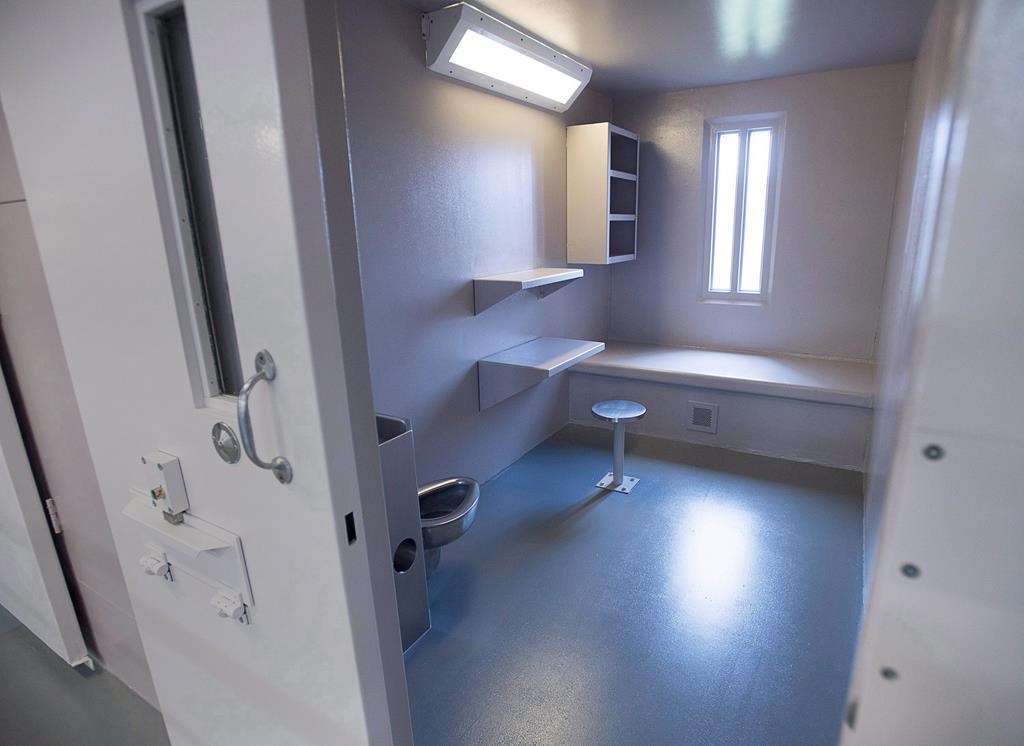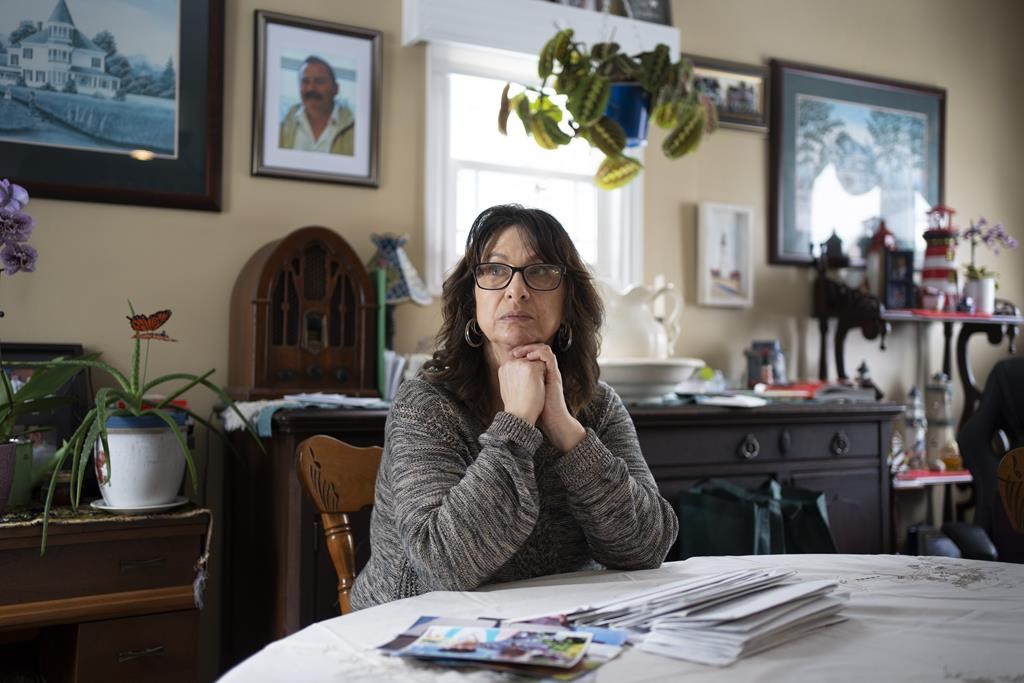For days on end, Richard Murray barely left his jail cell, trapped by staffing shortages that forced officials to lock down inmates.

“This is total cruelty and I only exist in these four walls of hell …. Why do I even fight to see another day?” the 60-year-old Murray wrote in a letter received by his wife Mary Hendsbee on Jan. 16.
By the time the handwritten letter arrived, Murray had given up fighting. The day before, he had taken his own life inside the Central Nova Scotia Correctional Facility.
Murray had been awaiting trial for nine months after his arrest on charges of pointing a firearm and uttering threats at his home near Antigonish, N.S. — charges he intended to vigorously contest in court.
But his letter — which was provided to The Canadian Press by family and was subject to review by corrections officers before being posted — referred six times to his expectation that he would die at the jail, known as Burnside. In it he asked his wife to inform the public of “the wrongful cruelty of a mental health patient kept on purpose until my death.”
Murray’s wife, his defence lawyer and the union representing jail guards all see his death as a sign of a dangerously under-resourced corrections system, though the province’s Progressive Conservative government argues it is making progress to reverse the chronic staffing shortages.
In earlier letters, Murray provided Hendsbee with a grim picture of life during frequent “lockdowns,” when corrections managers resorted to confining inmates to their cells rather than allowing the usual 12 hours in the common areas each day. In court documents, the managers have cited a lack of staff as the reason for the confinement.
“I haven’t been feeling very good for a while now, as when I bend over it feels like my head is going to blow off and the headaches are getting worse and people are commenting on how red I am,” Murray wrote in one letter. “It’s weird as I was only outside one day in the last six months.”
“It also seems like we get out (of cells) on a half and half rotation the odd day now; this has gone beyond cruelty. People are going to snap, when and where, nobody knows,” wrote Murray in another.

Get breaking National news
Hendsbee said her husband had been diagnosed with PTSD, depression and anxiety disorders, and yet he was having trouble receiving treatment or medication in the jail.
Just three days before he died, Nova Scotia Supreme Court Justice Peter Rosinski ruled that lockdowns occurring at Burnside due to shortages of corrections officers were illegal. His decision followed complaints known as habeas corpus applications related to the jail. In such an application, a judge assesses the conditions of a person’s confinement to determine whether they were unlawfully detained.
The judge found two inmates, Durrell Diggs and Ryan Wilband, had gone through “ongoing material deprivation” of their liberty while incarcerated last fall. Wilband was in the same unit as Murray.
Ashley Wolfe, one of the defence lawyers who represented Murray, said in an interview Thursday her former client’s case illustrates some of the underlying problems in the justice system, including a lack of facilities in the community where low-risk inmates can await trial.
She explained Murray was originally charged after police were called to his home near Antigonish for a wellness check last March 22. Wolfe said Murray — who had just returned home after a stay in hospital for mental health conditions — was alone in his residence and held up his shotgun in the belief that someone was breaking in. “I think the (arrival of police) took him by surprise. I don’t think he understood what was going on,” she said.
- Winter storms, rain and snow walloping Canada. Here’s where you’ll see it
- ‘A normal thing now’: Canadian family says extortion gang is preying on them
- ‘Really challenging issue’: Many B.C. communities still at high risk for flooding
- Food prices spiked in November, says StatCan in latest inflation report
The defence lawyer said her proposal to have Murray released on bail was rejected by Justice Timothy Gabriel in Nova Scotia Supreme Court due to “concerns over supervision on release.” Wolfe said judges are often unwilling to grant release when supervision is left to close family members — as was the case with Murray. But she said there is often no space in mental health treatment facilities or halfway houses that could have provided an alternative.
“What happened in this case is tragic,” she said. “You know a person has a right to trial, and essentially he didn’t get that opportunity and he obviously felt it was out of his control.”
Death ‘never should have happened’
Deborah Bayers, a spokeswoman for the Nova Scotia Justice Department, said corrections superintendents had declined a request for an interview, and no details of Murray’s case could be provided. She said a death review was being conducted by a committee overseen by the chief medical examiner.
Bayers said in an email that all 108 correctional officer positions and 43 relief correctional officer positions at Burnside are currently filled. “The challenge around staffing is not focused on vacant positions, but on capacity to backfill when staff are absent,” she wrote. She added the department has dedicated a full-time position to focus on recruitment and retention, and that Burnside has 14 new staff, as well as 25 new hires going through eight weeks of training to qualify as officers.
However, Hugh Gillis, a vice-president of the Nova Scotia Government and General Employees, said jail staff often don’t stay long due to the worsening conditions at the jail. “Critical staffing shortages make it unsafe for staff and for inmates,” he said.
He also said chronic staff shortages mean that protocols such as checks on the cells every 30 minutes and monitoring of mail for signs of suicide risk become harder to carry out.
Lawyer Hana Garson of the non-profit law firm PATH said there’s little doubt the lockdowns at the jail contribute directly to declines in inmates’ mental health, and she has doubts that conditions are improving. “What I hear on a frequent basis (from inmates) is in fact things are markedly worse since the Rosinski decision came out,” she said.
Meanwhile, Hendsbee said she has many unanswered questions, including whether her husband was properly checked on the night of his death, why he wasn’t given more treatment for his mental health problems, and whether anyone noticed his suicidal thoughts in the letter she received.
She said she has also been told that Murray’s body was found by inmates, rather than correctional officers, and wants to know why that occurred.
Hendsbee believes that her husband wouldn’t have taken his life in a better-resourced system, where there were more options for bail, enough trained corrections officers and more access to mental health services.
“They’re supposed to be checking on him and they should have been watching him …. This death absolutely, absolutely never should have happened,” she said.
This report by The Canadian Press was first published Feb. 19, 2024.









Comments